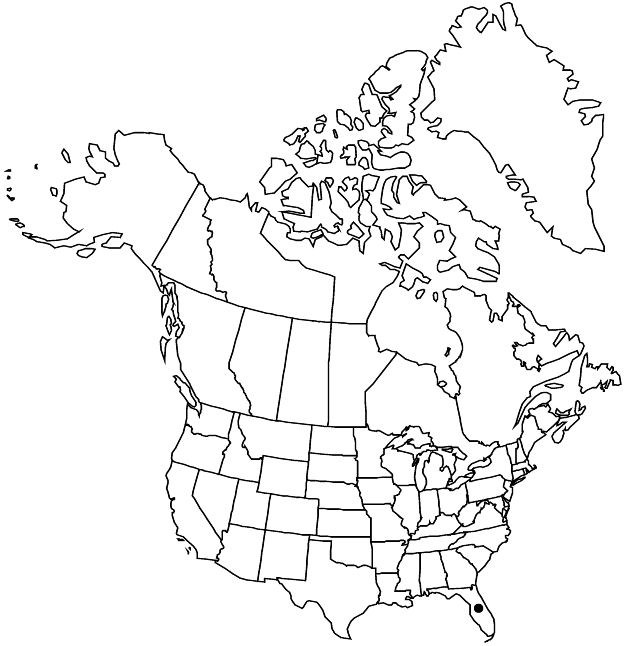Vitis shuttleworthii
Amer. Midl. Naturalist 7: 129. 1921.
Plants moderately high climbing, sparsely branched. Branches: bark exfoliating in shreds; nodal diaphragms 2.5–6 mm thick, sometimes continuing halfway into internode; branchlets subterete to terete, densely to sparsely tomentose, growing tips not enveloped by unfolding leaves; tendrils along length of branchlets, persistent, branched, tendrils (or inflorescences) at only 2 consecutive nodes; nodes not red-banded. Leaves: stipules less than 1 mm; petiole 1/2–3/4 blade; blade broadly cordate to nearly reniform, 4–12 cm, usually unlobed, sometimes 3-shouldered, infrequently deeply 3–5 lobed, apex acute to obtuse, abaxial surface not glaucous, densely white to rusty tomentose, concealed (except sometimes veins) by hairs, adaxial surface floccose to glabrate. Inflorescences 4–10 cm. Flowers functionally unisexual. Berries dark red to purple-black, slightly or not glaucous, globose, 12+ mm diam., skin separating from pulp; lenticels absent. 2n = 38.
Phenology: Flowering Apr–early May; fruiting Jun–Aug.
Habitat: Well-drained pinelands, thickets.
Elevation: 0–100 m.
Distribution

Fla.
Discussion
Vitis shuttleworthii is endemic to peninsular Florida and apparently is the closest relative of V. mustangensis.
Selected References
None.
Lower Taxa
"connate" is not a number.